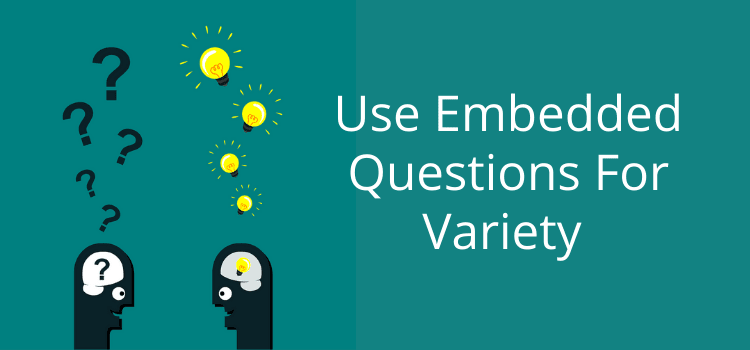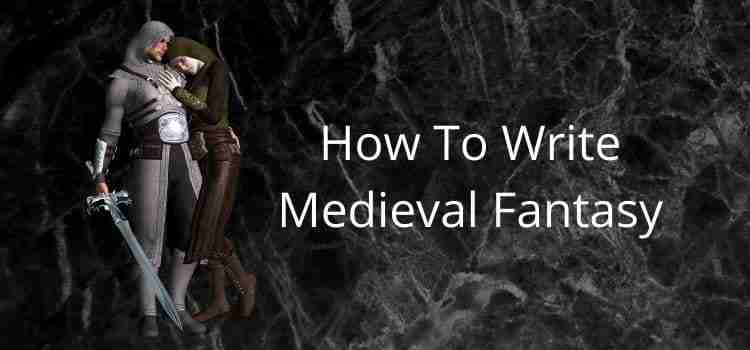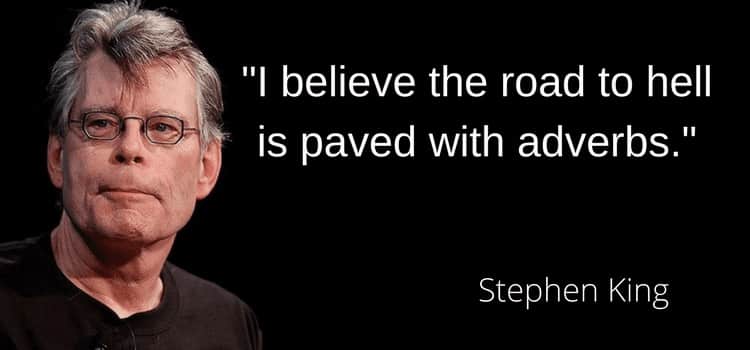
Embedded questions, sometimes called indirect questions, are easy to use when you want to add more variety to your writing.
We use them to change a direct question into a statement form. Indirect questions, which are also called polite questions, are one form of embedded questions.
But you can use other forms to convert a question into a statement or change the register in your writing.
Using variations is one way to enhance dialogue in fiction writing. You can also use it effectively in article writing, as it’s a great way to engage your readers.
What are embedded questions?
In its simplest form, we change a direct question into an indirect or polite question.
Direct: What time does the train arrive?
Indirect: Can you tell me what time the train arrives?
Direct: Where does he live?
Indirect: Could I ask you where he lives?
You can see that we remove the auxiliary verb (does). It is because the question is now at the beginning of the indirect question with a verb-subject inversion.
When there is no question adverb, we use if.
Direct: Is she coming today?
Indirect: Could you tell me if she is coming today?
In this example, the verb-subject is now subject-verb in the second part of the question.
For more complex structures, the same rules apply.
Direct: Have you ever had a deja vu experience?
Indirect: May I ask you if you have ever had a deja vu experience?
In all these examples, the first clause uses verb-subject inversion to form the question.
The second clause, which was the direct question, is now in statement order, with the subject before the verb.
Forms without a first clause question
You can also use indirect questions without a preceding question in the first clause.
Direct: Do you need any help?
Embedded: Let me know if you need any help.
You can use many introductory clauses to change a direct question.
Direct: What time do you want me to pick you up at the airport?
Embedded: I was wondering what time you want me to pick you up at the airport.
Direct: Do you know when Mark will be back?
Embedded: I’d like to know when Mark will be back.
When do you use a question mark?
Not all embedded questions have a question mark.
It depends on the grammar structure of the sentence.
If there is a verb-subject clause, you use one. But if there isn’t, you don’t.
But be aware of question tags because they need a question mark.
Examples:
Could you tell me how much longer I need to wait?
Let’s ask Mary if she knows when the boss will be back.
You wouldn’t happen to know how old Sam is, would you?
I’d like to know how I can get an extension for my loan.
What I really want to know is if you can complete the report by Friday.
Would you mind telling me how you felt after the treatment?
Introductory clauses
You can use many different clauses to introduce indirect and embedded questions.
Here is a brief list of the most common clauses you can use when you want to change the form of a question.
You can also see from the list which clauses require a question mark and which ones don’t.
Can you remember _____?
I was wondering _____
Could you explain why _____?
Have they told you whether _____?
Do you have any idea how long _____?
May I ask _____?
I have no idea _____
Do you know if _____?
I’d like to know _____
Would it be possible to ask _____?
I’m sorry, could I ask you to _____?
I wonder if/whether _____
I can’t remember if/whether _____
Could you tell me if/whether _____?
Would you mind telling me if _____?
Would it be possible for you to _____?
Is there any chance you could _____?
I don’t suppose you could _____
I’d like to know if/whether _____
I can’t remember _____
I’d be interested to know/hear _____
Do you happen to know _____?
I’m not sure _____
If it’s not too much trouble _____
I’m sorry, do you mean _____?
If you don’t mind, could you tell me_____?
Uses for embedded questions
If you are writing articles, it’s a terrific way to sound positive and inclusive of your readers.
You could finish an article with, what do you think?
But a better way would be to say, I’d be very interested to know what you think.
Another example might be, do you have this problem?
It could read better by using, I wonder if you have this problem.
For authors, when you vary your dialogue questions, you can give more depth and emotion to your characters.
A direct question is useful, of course, but there are times you might want to make a change.
“How long have you known this guy?” she asked.
“Would you mind telling me how long you’ve known this guy?” she asked.
“I was wondering how long you’ve known this guy,” she said.
Summary
You only need to use a little imagination to transform a direct question into an embedded form.
It’s a great tool to have in your toolbox when you need to add some variety to your writing.
Indirect questioning is a way to collect information or convey curiosity instead of using short, sharp, standard direct questions.
But, like anything else, don’t overdo it.
Related reading: Are Question Tags Effective In Your Dialogue Writing?



